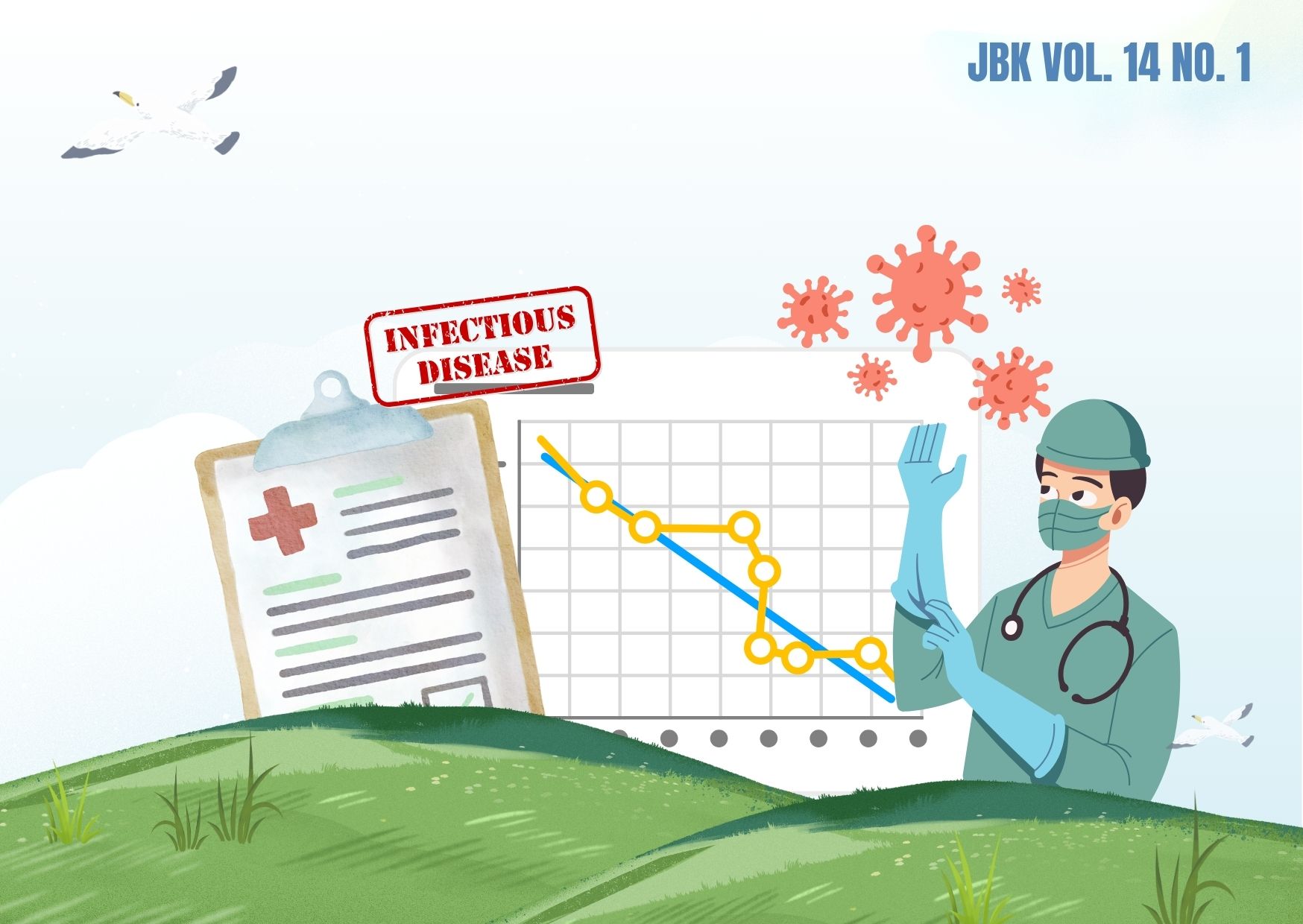QUALITY OF LIFE DURING PREGNANCY: A COMPARATIVE STUDY BETWEEN URBAN AND RURAL AREAS IN INDONESIA
Downloads
Assessing quality of life during pregnancy is vital to find timely preventive measures against pregnancy complications. The quality of life during pregnancy determines pregnant women's health. This study aims to identify the differences in the quality of life during pregnancy who participated in antenatal care (ANC) visits in primary healthcare centers in rural and urban areas. This study used a cross-sectional design and collected data through survey. The research population was 800 pregnant women who participated in ANC in three primary healthcare centers in urban areas and three others in rural areas. The quality of life during pregnancy questionnaire was used for data collection. The analysis was done using the Chi-square test and ordinal regression. Results showed no difference in the quality of life during pregnancy between women in urban areas and those in rural areas. Some factors that affected the quality of life during pregnancy included education, fetal age, number of pregnancies, number of live children, and pregnancy plans in women living in urban areas. Meanwhile, in women living in rural areas, the quality of life during pregnancy was affected by education level, occupation, fetal age, number of pregnancies, number of live children, and pregnancy plans. There are influences of age, education level, occupation, gestational age, number of pregnancies, number of living children, and pregnancy plans on the quality of life of pregnant women in rural areas.
Group TW. The World Health Organization Quality of Life Assessment (WHOQOL): Development and General Psychometric Properties. Soc Sci Med [Internet]. 1998;46(12):1569–1585. Available from: https://doi.org/10.1016/S0277-9536(98)00009-4
Ventegodt S, Merrick J, Andersen NJ. Quality of Life Theory I. The IQOL Theory : An Integrative Theory of the Global Quality of Life Concept. Sci World J [Internet]. 2003;3:1030–1040. Available from: https://doi.org/10.1100/tsw.2003.82
Veenhoven R. The Four Qualities of Life Ordering Concepts and Measures of the Good Life [Internet]. Milan; 2013. (The Exploration of Happiness: Present and Future Perspectives). Available from: https://doi.org/10.1007/978-94-007-5702-8_11
World Health Organization, editor. Women and Health: Today's Evidence Tomorrow's Agenda [Internet].
Geneva, Switzerland: World Health Organization; 2009. 107 p. Available from: https://apps.who.int/iris/handle/10665/44168
Abedi G, Babamiri F, Rostami F. Pregnant Women Life Quality Concept & Phenomenology. Int J Collab Res Intern Med Public Heal [Internet]. 2012;4(7):1412–1418. Available from: https://www.iomcworld.org/articles/pregnant-women-life-quality-concept--phenomenology.pdf
Naseem K, Khurshid S, Khan SF, Moeen A, Farooq MU, Sheikh S, et al. Health Related Quality of Life in Pregnant Women : A Comparison Between Urban and Rural Populations. J Pakistan Med Assoc [Internet]. 2011;61(3):308–312. Available from: https://pubmed.ncbi.nlm.nih.gov/21465959/
Buiting HM, Olthuis G. Importance of Quality-of-Life Measurement Throughout the Disease Course. JAMA Netw Open [Internet]. 2020;3(3):1–2. Available from: https://doi.org/10.1001/jamanetworkopen.2020.0388
Mazúchová L, KelÄíková S, Dubovická Z. Measuring Women's Quality of Life During Pregnancy. Kontakt [Internet]. 2018;20(1):32–37. Available from: https://doi.org/10.1016/j.kontakt.2017.11.004
Stephen T, Orr A, Terblanche L, Sawatzky R. Integrating Quality of Life Assessments in Student Clinical Learning Experience/Intégration d'une évaluation de la qualité de vie dans les situations d'apprentissage clinique des étudiantes. Qual Adv Nurs Educ - Avancées en Form Infirm [Internet]. 2019;5(1):1–12. Available from: https://doi.org/10.17483/2368-6669.1182
Madian AAEA, Tawfik EH. Knowledge, Practice and Quality Of Life (QOL) of Pregnant Women: A Comparison Between Urban and Rural Populations [Internet]. 2020. Available from: https://papers.ssrn.com/sol3/papers.cfm?abstract_id=3582231
Lemeshow S, Hosmer Jr DW, Klar J, Lwanga SK. Adequacy of Sample Size in Health Studies [Internet]. World Health Organization. West Sussex, England: John Wiley & Sons Ltd.; 1990. 252 p. Available from: https://books.google.co.id/books/about/Adequacy_of_Sample_Size_in_Health_Studie.html?id=gUBjQgAACAAJ&redir_esc=y
Dwarkanath P, Vasudevan A, Thomas T, Anand SS, Desai D, Gupta M, et al. Socio-Economic, Environmental and Nutritional Characteristics of Urban and Rural South Indian Women in Early Pregnancy: Findings from the South Asian Birth Cohort (START). Public Health Nutr [Internet]. 2018;21(8):1554–1564. Available from: https://doi.org/10.1017/S1368980017004025
Alzboon G, Vural G. Factors Influencing the Quality of Life of Healthy Pregnant Women in North Jordan. Medicina (B Aires) [Internet]. 2019;55(6):1–12. Available from: https://doi.org/10.3390/medicina55060278
Calou CGP, Oliveira MF De, Carvalho FHC, Soares PRAL, Bezerra RA, Lima SKM de, et al. Maternal Predictors Related to Quality of Life in Pregnant Women in the Northeast of Brazil. Health Qual Life Outcomes [Internet]. 2018;16:1–10. Available from: https://doi.org/10.1186/s12955-018-0917-8
Lagadec N, Steinecker M, Kapassi A, Magnier AM, Chastang J, Robert S, et al. Factors Influencing the Quality of Life of Pregnant Women: A Systematic Review. BMC Pregnancy Childbirth [Internet]. 2018;18(1):1–14. Available from: https://doi.org/10.1186/s12884-018-2087-4
Fatemeh A, Azam B, Nahid M. Quality of Life in Pregnant Women Results of A Study from Kashan, Iran. Pakistan J Med Sci [Internet]. 2010;26(3):692–697. Available from: https://www.pjms.com.pk/issues/julsep2010/pdf/article38.pdf
Copyright (c) 2023 Jurnal Biometrika dan Kependudukan

This work is licensed under a Creative Commons Attribution-NonCommercial-ShareAlike 4.0 International License.
Copyright©2022 Jurnal Biometrika dan Kependudukan (Journal of Biometrics and Population)
This work is licensed under a Creative Commons Attribution-NonCommercial-ShareAlike 4.0 International License.
1. Copyright of all journal manuscripts is held by the Jurnal Biometrika dan Kependudukan.
2. Formal legal provisions to access digital articles of the electronic journals are subject to the provision of the Creative Commons Attribution-ShareAlike license (CC BY-NC-SA), which means that Jurnal Kesehatan Biometrika dan Kependudukan to keep, transfer media/format, manage in the form of databases, maintain, and publish articles.
3. Published manuscripts both printed and electronic are open access for educational, research, and library purposes. Additionally, the editorial board is not responsible for any violations of copyright law.



































